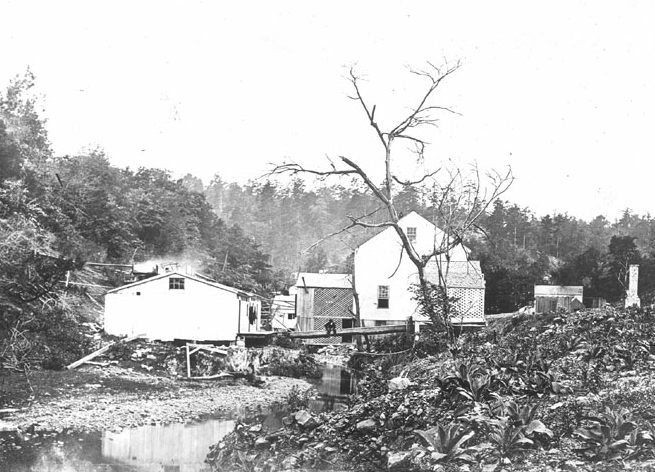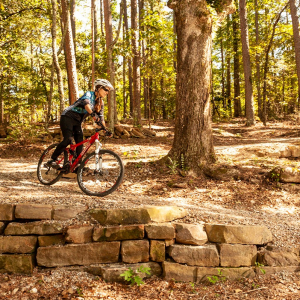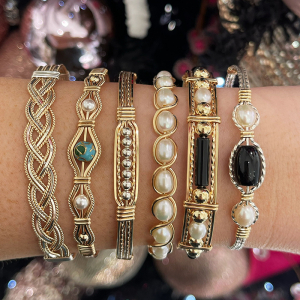Paradise Found: A History of Hot Springs
Visitors can’t help but feel the thousands of years of history surrounding them — history that continues to bubble up every minute. The water in the hot springs comes from rainwater that fell more than 4,000 years ago. It percolated 2,000-8,000 feet into the earth where it became superheated by surrounding rock before rising and emerging at 147 F – and nearly pure – from the area’s 47 hot springs.
While no one knows when the first human visitors came to what is now Hot Springs, authorities believe Native Americans — including the Tunica, Caddo, Quapaw, Choctaw, Cherokee and other groups — were using the springs as a peaceful gathering spot as long as 10,000 years ago. The Native Americans called the area “the valley of the vapors,” where tribes could put aside their differences and enjoy the rejuvenation of the springs. Oddly enough, this area became “neutral ground” again in the 1930s when mobsters from Chicago, New York and Los Angeles came to Hot Springs to get along and away from it all.
European Exploration
Spanish explorer Hernando de Soto is believed to be one of the first European visitors to what is now Hot Springs while on his quest for an earthly paradise — a fabled city of gold. Guided by Native Americans, he and his troops arrived in September 1541 to partake of the thermal springs. As far as it is known, de Soto was the last European visitor for more than 100 years, when French explorers Marquette and Joliet arrived in 1673 and claimed the area for France. Possession seesawed between France and Spain until 1803, when the United States acquired it as part of the Louisiana Purchase.
American Settlement
In 1804, President Thomas Jefferson commissioned an expedition to explore the area. The explorers found a log cabin and a few rudimentary shelters used by people visiting the springs, though no permanent dwellers. In 1807, a man named Prudhomme became the first settler of modern Hot Springs, and John Perciful and Isaac Cates soon joined him.
In 1820, the Arkansas Territorial Legislature requested the springs and the adjoining mountains be set aside as a federal reservation. Congress established the Hot Springs Reservation on April 20, 1832 to protect the hot springs area. This makes Hot Springs the oldest park in the National Park System — 40 years older than Yellowstone.
In 1921, Congress changed the name of Hot Springs Reservation to Hot Springs National Park, which now encompasses 5,500 acres. The park includes famous Bathhouse Row, which consists of eight architecturally unique, turn-of-the-century bathhouses in the heart of the downtown historic and arts district.
A Resort is Born
Over the years, Hot Springs became famous for its therapeutic opportunities. The area attracted more visitors and developed into a well-known resort nicknamed “The American Spa” because it attracted not only the wealthy but also indigent health seekers from around the world. It was believed for hundreds of years that the natural thermal waters could cure any number of ailments, including arthritis and polio. The baths faded as a medical treatment with the advent of modern medical science, but people still came by the thousands for relaxation.
The number of famous visitors who have frequented Hot Springs range from notable boxing champion Jack Dempsey to performers Sarah Bernhardt, Liberace, the Smothers Brothers, Bill “Bojangles” Robinson and Presidents Theodore Roosevelt, Franklin D. Roosevelt and Harry Truman. It is reputed that Tony Bennett first sang his signature song “I Left My Heart in San Francisco” during a rehearsal at the Black Orchid Club in 1963, and in the 1940s, actor George Raft could often be seen driving his convertible along Central Avenue.
Baseball Capital
During the late 19th and early 20th centuries, Hot Springs was the off-season capital for Major League Baseball. The Chicago Cubs, Pittsburgh Pirates, Brooklyn Nationals, Chicago White Stockings and the Boston Red Sox all held spring training in Hot Springs. Babe Ruth first visited the spa city as a young pitcher with the Red Sox, but returned often for baths and rounds of golf.
In celebration of these deep connections to America’s pastime, the city recently inaugurated The Historic Baseball Trail. A series of plaques and a smartphone-guided tour mark major moments in Hot Springs’ baseball history — like Babe Ruth’s first 500-foot-plus home run achieved while playing ball at Whittington Park.
The Gangster Era
From the 1920s through the 1940s, Hot Springs flourished as a place where the famous and infamous came to enjoy the thermal waters, luxury hotels and illegal gambling and bootlegging, especially in the 1930s. Gambling hotspots included The Ohio Club, Hot Springs oldest bar, and The Southern Club (now the location of the Josephine Tussaud Wax Museum), which was reputed to be owned by mobster Owney Madden. He was one of the founders of the New York mob, was part of Murder, Inc., and owned Harlem’s famous Cotton Club.
Infamous mobsters such as Al Capone were frequent visitors, with Capone taking up part-time residence in Suite 443 of the Arlington Hotel. Mobster Charles “Lucky” Luciano was arrested in Hot Springs on the promenade behind the Ozark Bath House. He was in town gambling and taking the baths.
Illegal gambling was permanently shut down in Hot Springs in 1964, thanks to a federal crackdown on what the government called “the site of the largest illegal gambling operation in the U.S.”
Bathhouse Row
One of the most notable Hot Springs’ features is Bathhouse Row, a series of eight historic bathhouses that lines Central Avenue.
The Fordyce Bathhouse, built in 1915, is one of the most recognizable of the eight, as it serves as the Hot Springs National Park Visitor Center and is the largest and most ornate of all the bathhouses.
In 1922, the Quapaw Bathhouse was built in the Spanish Colonial Revival style and boasts a large Moorish-style dome that’s capped with a copper cupola. Most interesting is the basement grotto containing the Quapaw Spring, which today serves as a natural steam room for the bathhouse.
Buckstaff Bathhouse – built in 1912 – is the oldest bathhouse still in operation. Built in a Neoclassical Revival style, engaged Tuscan columns divide the main façade into seven bays flanked by pavilions at the north and south ends.
Hot Springs Now
Hot Springs continues to make history with its fine restaurants, entertainment venues, art galleries and incredible natural beauty. On a cool night, while strolling down Central Avenue, a visitor can actually see the steam vapors drifting down from the hillside springs as they have for thousands of years. It’s a momentary glimpse into history that is offered only in Hot Springs.
Today, Hot Springs’ lakes have become the major draw to the area, and they’re the perfect complement to a resort known for its water. Hot Springs began to expand this resort reputation in the 1930s with the construction of Lake Catherine and Lake Hamilton to the south of downtown Hot Springs, and in the 1950s, Lake Ouachita was created, earning the area its “Tri-Lakes” nickname.
Hot Springs By the Numbers
- 47 hot springs
- 1541 – The year Hernando de Soto visited Hot Springs
- 140 miles – the distance you can see in all directions from the top of Hot Springs Mountain Tower
- 2 – the number of still-operational bathhouses on historic Bathhouse Row
- In 1803 the United States acquired Hot Springs as a part of the Louisiana Purchase.
- 147°F – the temperature of the Spa City’s thermal mineral water
- There are 5,500 acres within Hot Springs National Park.
- 5 Major League Baseball teams – the Pittsburgh Pirates, the Chicago Cubs, the Chicago White Stockings, the Brooklyn Nationals and the Boston Red Sox – held spring training in Hot Springs in the late 19th and early 20th centuries.
- 443 – the suite number at the Arlington Hotel where infamous mobster Al Capone lived part-time in the 1930s
- There are 3 lakes in the Spa City – Lake Hamilton, Lake Ouachita and Lake Catherine.
- 363 days a year that Oaklawn Racing & Gaming is open (only closed on Christmas and Easter)

















